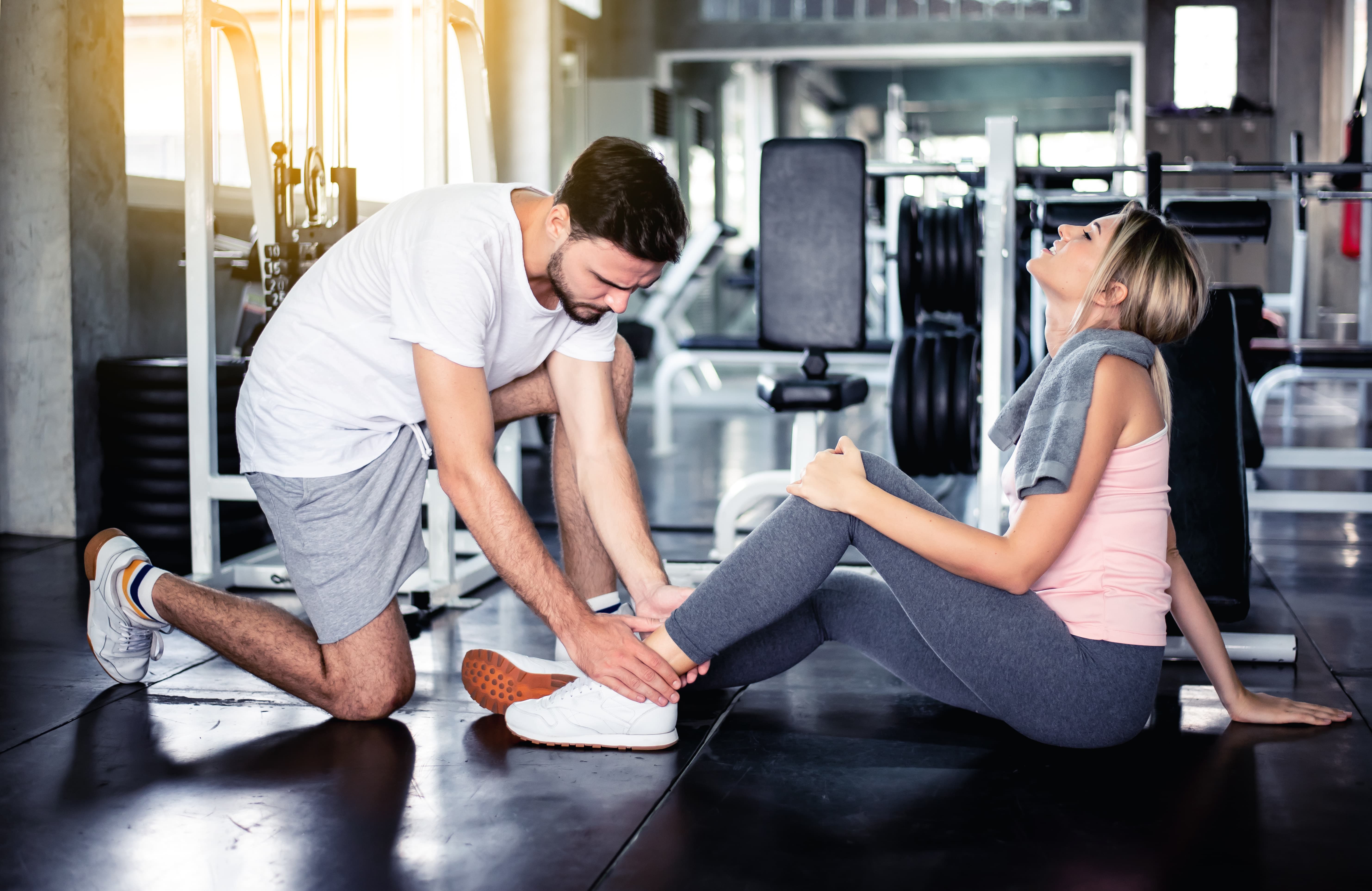With sport and physical activity being such a huge part of so many Brits’ lives, it’s important to raise awareness of how to exercise safely.
The Compensation Experts surveyed 1,000 gym users, to reveal the most common exercise-related injuries and which pieces of gym equipment pose the most danger.
As well as this, The Compensation Experts also teamed up with Senior Private Physiotherapist Ann Kuan, to provide top tips to keep safe during your next workout.
The Top Ten Most Common Body Part to Injure in the Gym
As far as gym injuries go, there’s nobody part that’s more susceptible to discomfort than your knees.
With a whopping 17.3% of post-gym pain attributed to knee injuries (17.3%), followed by your shoulders (11.5%) and ankles (9.3%).
The top ten most common body parts to injury in the gym can be seen below:
| Rank | Body Part | Percentage |
| 1 | Knee | 17.3% |
| 2 | Shoulder | 11.5% |
| 3 | Ankle | 9.3% |
| 4 | Lower Torso | a6.3% |
| 5 | Wrist | 6.0% |
| 6 | Lower Leg | 5.0% |
| 7 | Foot | 4.8% |
| 8 | Entire Body | 4.6% |
| 9 | Upper Torso | 4.0% |
| 10 | Upper Leg | 3.2% |
The Top Ten Most Common Machines to Cause Injury
Taking the top spots as the two pieces of gym equipment that pose the most danger, with around a quarter of all injuries attributed to each of these types of workout, we have the weight rack (25.4%) and treadmill (25.0%).
See rank for most dangerous machines below:
| Rank | Machine | Percentage who have been injured |
| 1 | Weights | 25.4% |
| 2 | Treadmill | 25.0% |
| 3 | Bike | 17.1% |
| 4 | Cross Trainer | 15.3% |
| 5 | Pull-up bar | 15.2% |
| 6 | Step machine | 12.8% |
| 7 | Rowing Machine | 11.9% |
| 8 | General Exercise Machine | 9.1% |
| 9 | Punching bag | 8.0% |
| 10 | Box Jump | 7.3% |
Five Top tips to avoid injury at the gym
Many Brits have recently incorporated exercise into their regular routines. And while this is beneficial for mental and physical health, it’s important to take the appropriate steps when trying out something new.
Senior Private Physiotherapist at Vita Health Group Ann Kuan gives her top tips to avoid injury at the gym.
1. Commit to a warm-up
Before starting any type of exercise, it’s important to warm up with dynamic stretches.
These are active movements that put your body through a range of motions and accomplishes flexibility of the muscle groups you’ll be using.
Benefits include far fewer injuries, as well as achieving greater power and a more efficient workout.
2. Progress at a steady pace
If you’re trying to increase the amount of exercise you do, whether to lose weight or build muscle, be sure to only raise the frequency and intensity at a steady pace that your body can handle.
The key here is to gradually improve your volume over time, and don’t be afraid to drop back down.
3. Rank your pain level and modify
If you experience discomfort while exercising, take a moment to ask yourself how bad it is; can you still perform normal activities, or is your everyday life being affected?
It’s important to seek medical assistance immediately if your injury is impacting your daily routines, but, if the pain is mild, consider trying a lower intensity workout for a while.
Additionally, consider also using ice, heat, or relief balms to get the pain under control.
4. Avoid sitting for hours on end
No matter how fit and strong you are, back pain is common in even the most sedentary actions.
For instance, working from the kitchen table, sofa, or even your bed are far from beneficial for your posture.
Even sitting at a desk for long periods of time can have negative consequences. The best ways to avoid back pain are to take advice on ergonomic set-up solutions and get up for multiple breaks throughout the day.
5. Don’t forget self-care
Among the most important tips to avoid gym-related injuries is to practice self-care!
If you’re suffering from a little discomfort, worry and stress can exacerbate the pain.
If you’re unsure as to the extent of any damage, it may be beneficial to visit a professional to seek clarification.
Otherwise, following self-care habits like mindfulness and meditation can help to reduce anxiety and even alleviate physical pain.
For the full report, please visit: https://the-compensation-experts.co.uk/most-common-gym-injuries/
